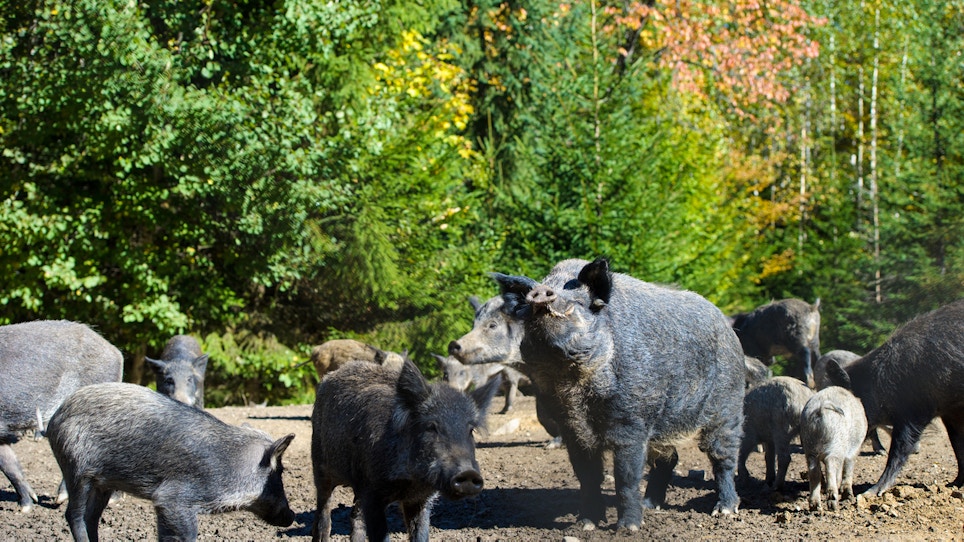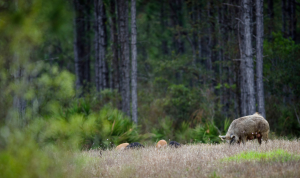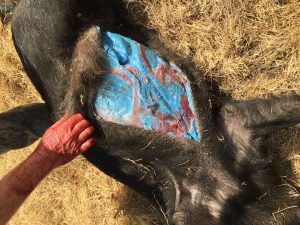There are estimated to be more than 2 million feral hogs in Texas and state Agriculture Commissioner Sid Miller has found what he believes is a new solution to end the war. However, it isn’t going over well with everyone. Unlike Miller’s passed legislation for hunters to shoot hogs from helicopters, his newest rule change, classifying a warfarin-based hog lure, “Kaput Feral Hog Lure,” as a state-limited-use pesticide used to poison hogs, doesn’t have hunters very happy.
“This solution is long overdue. Wild hogs have caused extensive damage to Texas lands and loss of income for many, many years,” Commissioner Miller said in a press release. “With the introduction of this first hog lure, the ‘Hog Apocalypse’ may finally be on the horizon.”
What Is Kaput Feral Hog Lure?
Kaput Feral Hog Lure is the first toxicant to be listed specifically for use in controlling the feral hog population. The Texas Department of Agriculture (TDA) says the pesticide “represents a new weapon in the long-standing war on the destructive feral hog population,” according the The Washington Post.
The newly passed rule change isn’t off the cuff. Extensive testing of warfarin in Texas has been conducted since 2008. Kaput Feral Hog Lure manufacturer, Sciemetrics Ltd., Corp., has manufactured rodent-management products for 15 years. The TDA reports the approval of warfarin for hog control came after more than 10 years of research.
The Environmental Protection Agency (EPA) approved Kaput Feral Hog Lure due to its low toxicity. Still, the TDA imposed the stricter regulations of making it limited use only, making the product available to only licensed applicators or someone under direct supervision of license applicators.
Is Poisoning The Best Solution To Hog Control?
This is a tricky question, and the answers vary depending on who you ask.
The TDA will say absolutely. According to The Washington Post, feral hogs cause about $50 million in damage per year. They’re also notorious for uprooting crops and “entire city parks” and trampling across highways, along with a long list of other problematic situations.
“They’re so prolific, you can’t hardly keep them in check,” Miller told the American-Statesman. “This is going to be the hog apocalypse, if you like: If you want them gone, this will get them gone.”
Hunters generally agree in wanting the destruction of feral hogs erased, but the immediate backlash shows how they feel about the new rule. The Texas Hog Hunters Association has taken a public stand against Miller’s chemical war. The Washington Post reports in less than two full days, the organization had more than 3,000 signatures petitioning the new rule. The petition sits at just under 10,000 at the time of this writing.
“We don’t think poison is the way to go,” Eydin Hansen, the vice president of the Texas Hog Hunters Association, told CBSNews.com. “If a hog is poisoned, do I want to feed it to my family? I can tell you, I don’t.”
Will Poisoning Work?
The warfarin-based pesticide will kill hogs, but is it worth it?
Warfarin has been used to poison hogs in the past. Australia introduced the idea to the world to address its overpopulation issues, according to The Washington Post. After several years of use, Australia banned the act due to “extreme suffering.”
The Post reports warfarin is deadly enough it could indeed create the “hog apocalypse” Miller promises. The newspaper writes an experiment in 1987 using poison on hogs in the Sunny Corner State Forest wiped out 99 percent of the population in just a few months.
The actual poisoning death is being called inhumane by many. Multiple outlets report internal and external bleeding are common during the week-long process. One autopsy revealed a pig’s liver and stomach infused, according to The Post. The poisoned pigs’ muscles are also very identifiable, appearing a bright blue due to dye in the poison.
What Are The Concerns?
The largest question surrounding poisoning feral hogs is how will the poison be kept from other animals. EPA regulations require hogs to be fed the poison from bins with 10-pound lids. That’s the only plan to keep other animals from ingesting the toxicant. It’s one that Tyler Campbell, a former researcher with the U.S. Agriculture Department, said won’t work.
Campbell mentioned seeing raccoons lift much more weight than 10 pounds during his research, according to The Washington Post. Others, including state wildlife veterinarian Jim LaCour, have similar concerns. LaCour told the Times-Picayune even if hogs are the only animals that can eat the poison from the bins, they’ll surely drop crumbs on the ground.
“We do have very serious concerns about non-target species,” LaCour told the newspaper.
Even if animals don’t ingest the poison itself, it’s likely birds and predators will feast on hogs’ poisoned meat after they die. These concerns, however, are all minimal to Miller. The Post reports he said wildlife or pets “would have to ingest extremely large quantities over the course of several days” before getting sick.
What do you think of the new rule in Texas? Did the TDA make the right decision or is there a better way to win the war against hogs?








